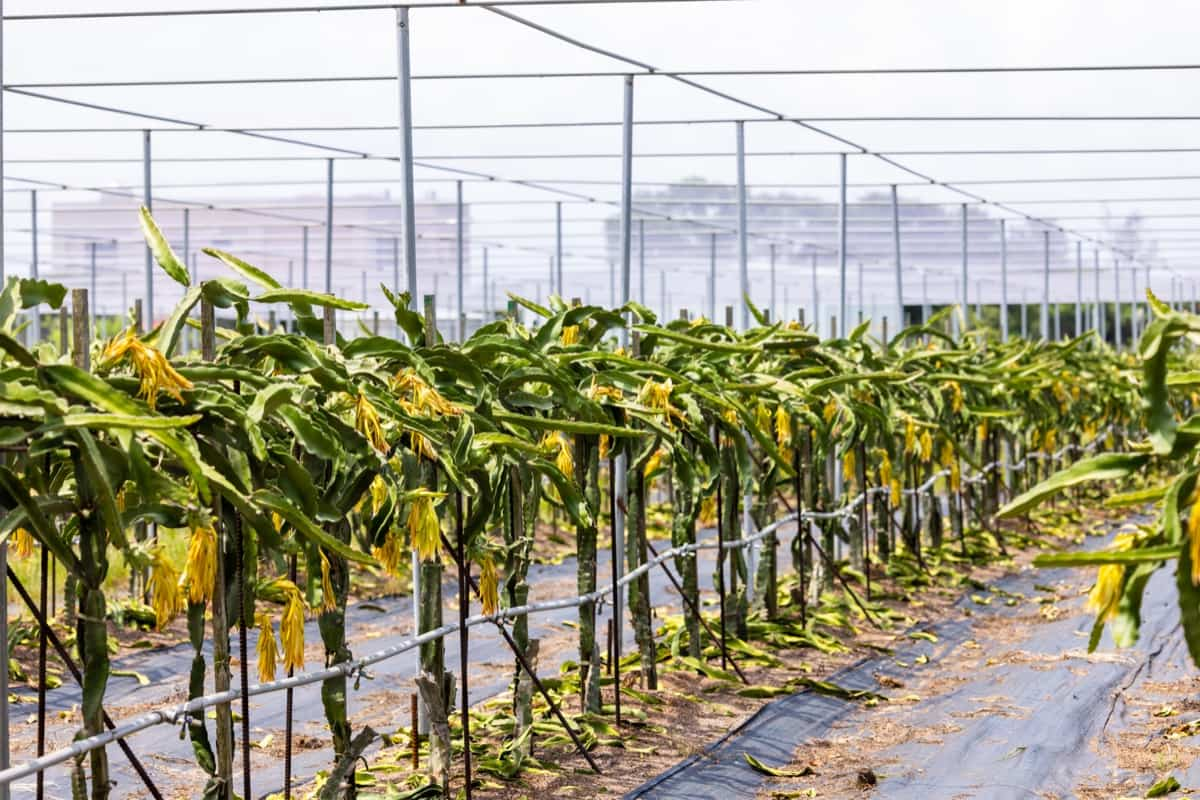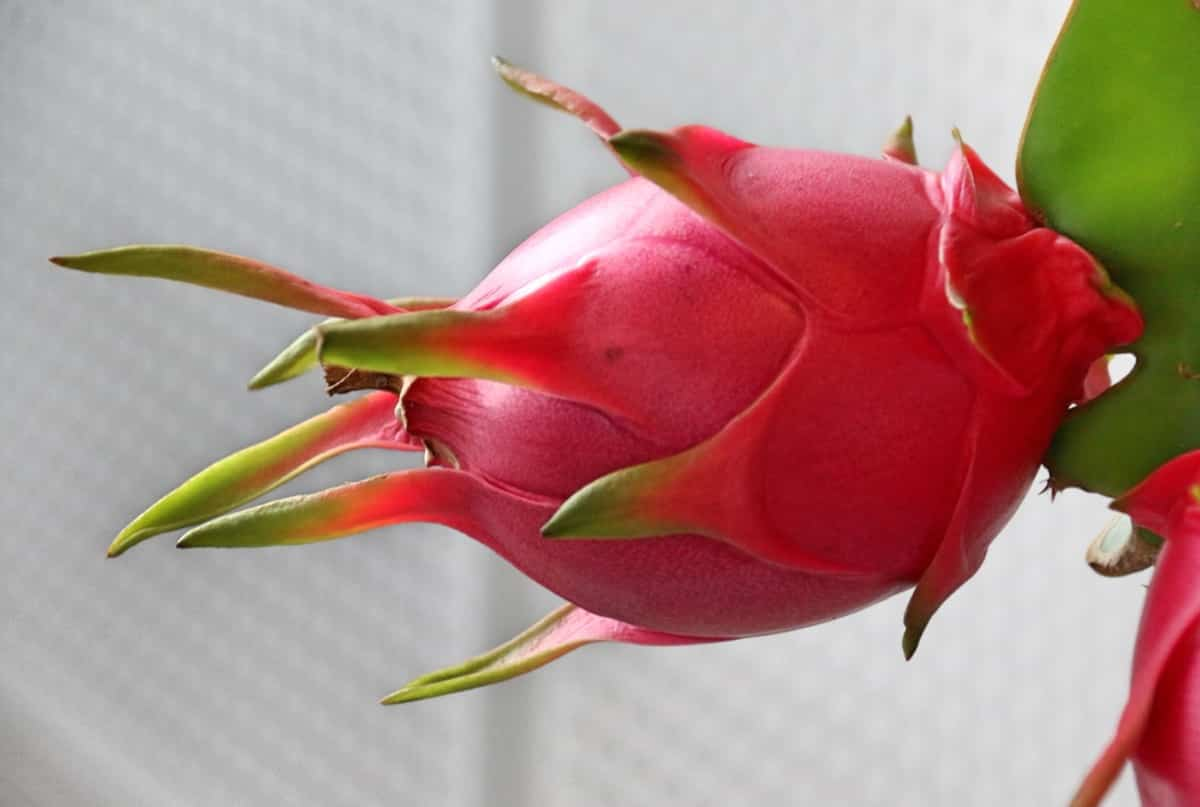Dragon fruit farming can be rewarding, but like any agricultural endeavor, it comes with its own challenges. To ensure a successful dragon fruit farm, it’s important to avoid common mistakes. Here are 10 mistakes to avoid in dragon fruit farming.

Mistakes to Avoid in Dragon Fruit Farming
Lack of Proper Soil Preparation and Drainage
Failing to amend the soil for this cactus-like plant properly can lead to suboptimal growth and fruit production. Dragon fruit requires well-draining soil with a slightly acidic pH, so neglecting these factors can result in root rot and poor development. To prevent this, ensure the soil is well-aerated, sandy loam with good drainage to prevent soggy roots. Implementing proper soil preparation and drainage measures is essential to create a thriving environment for dragon fruit and maximize the success of your farming venture.
Inadequate Sunlight Exposure
Dragon fruit plants require plenty of direct sunlight, ideally 6-8 hours daily. Inadequate sunlight can lead to slow growth, poor flowering, and reduced fruit production. To prevent this mistake, choose a planting location with full sun exposure, avoid shading from nearby structures or trees, and ensure proper spacing between plants to allow sunlight to reach all parts of the plant. Regularly monitor and trim any overhanging branches or structures that may block the sunlight.
Improper Planting Techniques
- Planting Depth: Planting dragon fruit too deep can inhibit growth. Ensure you plant the cuttings or seedlings at the right depth, usually around 2/3 above the ground.
- Support Structures: Dragon fruit plants need strong support structures. Inadequate or poorly constructed trellises can lead to plant damage or reduced fruit production.
- Spacing: Incorrect spacing between plants can lead to overcrowding, restricting growth and airflow. Follow recommended spacing guidelines.
In case you missed it: Step-by-Step Guide to Establishing a Dragon Fruit Farm

Overwatering or Underwatering
- Overwatering: Dragon fruit plants are susceptible to root rot if overwatered. Ensure proper drainage and watering schedules. Water deeply but infrequently, especially during the rainy season.
- Underwatering: Consistently dry soil can lead to stunted growth and poor fruit production. Monitor soil moisture levels and provide sufficient water during dry periods.
Neglecting Pest and Disease Management
- Pests: Pests in dragon fruit farming include spider mites, mealybugs, and aphids. Regular inspection and appropriate pest control measures (like insecticidal soaps or neem oil) are essential.
- Diseases like fungal infections and bacterial wilt can affect dragon fruit. Proper sanitation practices, well-drained soil, and disease-resistant varieties can help mitigate these issues.
Lack of Proper Pollination
Proper pollination is crucial for the fruit to set and develop. Dragon fruit plants are typically self-fertile, which means they can pollinate themselves, but they may benefit from cross-pollination for increased fruit production. To avoid this mistake,
- Even though dragon fruit flowers are typically pollinated by bats and moths in their native habitat, introducing pollinators like bees to your farm can significantly enhance the fruit set.
- In the absence of natural pollinators, consider hand pollination by using a small brush or Q-tip to transfer pollen from the stamen to the flower’s stigma. This can be a time-consuming but effective method.
Failure to Prune and Train Plants
- Regular Pruning: Prune your dragon fruit plants to remove excess growth and dead or damaged branches. Pruning helps maintain the plant’s shape and allows better light penetration.
- Provide Support: Dragon fruit plants can grow quite tall and heavy. Provide adequate support, such as trellises or stakes, to prevent them from falling over, especially when they start bearing fruit.
- Train for Structure Encourage lateral branching and a structured growth pattern. This allows for better fruit production and makes it easier to manage the plant.:
- Control Growth: Dragon fruit can be vigorous growers. To avoid overcrowding, space your plants appropriately and be ready to cut back excessive growth as needed.
Inadequate Nutrient Management
- Over-fertilization: Using excessive amounts of fertilizers can harm dragon fruit plants. It may lead to nutrient imbalances and damage the root system. It’s essential to follow a well-planned fertilization schedule and use the right type and quantity of fertilizers.
- Under-fertilization: Neglecting the nutritional needs can result in stunted growth and poor fruit production. Regularly monitor the soil’s nutrient levels and adjust your fertilization plan accordingly.
- Imbalanced Nutrients: Dragon fruit plants require a balanced mix of essential nutrients, including nitrogen, phosphorus, potassium, and micronutrients. Failing to maintain the correct nutrient balance can lead to various problems, such as poor fruit quality or plant diseases.
In case you missed it: Best Practices for Propagating Dragon Fruit Plants

Ignoring Temperature and Climate Requirements
- Choosing the Wrong Variety: Dragon fruit varieties have different temperature and climate preferences. Some may thrive in a tropical climate, while others are more suitable for subtropical or temperate regions. Choosing the right variety for a specific climate is crucial.
- Inadequate Frost Protection: In areas with occasional frosts or cold temperatures, protecting dragon fruit plants is essential. Ignoring frost protection measures can result in severe damage or plant loss.
- Inconsistent Microclimates: Dragon fruit plants can be sensitive to temperature fluctuations. Ensure that your planting site and growing conditions are consistent. Sudden temperature swings can stress the plants and affect their growth and fruiting.
Lack of Regular Monitoring and Maintenance
Without consistent attention, issues like pest infestations, disease outbreaks, and inadequate irrigation can go unnoticed, leading to crop damage or reduced yields. Proper pruning, trellis upkeep, and regular inspection for signs of distress are crucial. Inadequate maintenance may also hinder the development of new growth and affect fruit quality. To ensure a successful dragon fruit farm, commit to frequent monitoring and prompt maintenance to address any problems.
Frequently Asked Questions
What are the Problems with Dragon Fruit Farming?
Dragon fruit farming faces challenges such as susceptibility to pests and diseases, including root rot and scale insects, which can impact plant health and yield. Additionally, adverse weather conditions, including heavy rainfall and strong winds, may damage the delicate stems and fruit, while market fluctuations and competition can affect profitability for growers. Proper management and disease control measures are crucial to overcome these issues.
What Attacks Dragon Fruit?
Various pests and diseases can attack Dragon fruit. Common threats include aphids, mealybugs, and fruit flies, which can damage the plant and fruit. Fungal infections like anthracnose and root rot can also harm dragon fruit. Regular monitoring and appropriate pest control measures are essential for its protection.
How Do You Protect Dragon Fruit?
Protecting dragon fruit involves providing adequate support for its climbing structures, shielding it from strong winds, and using organic mulch to retain moisture and prevent weeds. Prune damaged or overgrown branches and install a trellis for support. Regular watering, proper nutrition, and pest control also help ensure a healthy dragon fruit plant.
In case you missed it: Dragon Fruit Plant Fertilizer Requirements and Recommendations: For Best Yields

How Can I Improve My Dragon Fruit?
To improve your dragon fruit yield, ensure well-draining soil, a pH of 5.5-7, and ample sunlight. Provide support for climbing varieties. Water sparingly, avoiding waterlogged conditions. Use balanced fertilizer during the growing season. Protect from strong winds and pests. Regularly prune dead stems for optimal growth and fruit production.
Conclusion
In conclusion, to succeed in dragon fruit farming, farmers must pay attention to these common mistakes to avoid in dragon fruit farming. Farmers can achieve healthy, productive dragon fruit plants and a successful harvest by following best practices and addressing these potential pitfalls.
- Feed Your Flock for Less: Top 10 Tips to Save on Chicken Feed
- Ultimate Guide to Ossabaw Island Hog: Breeding, Raising, Diet, and Care
- Hatching Answers: The Top 10 Reasons Your Chickens Aren’t Laying Eggs
- Eggs and Economics: Breaking Down the Cost of Raising Backyard Chickens
- Defend Your Greens: Proven Methods to Keep Iguanas Out of Your Garden
- Ultimate Guide to Cinnamon Queen Chicken: A Comprehensive Guide for Beginners
- Ultimate Guide to California Tan Chicken: Breeding, Raising, Diet, Egg-Production and Care
- Ultimate Guide to Marsh Daisy Chicken: Breeding, Raising, Diet, and Care